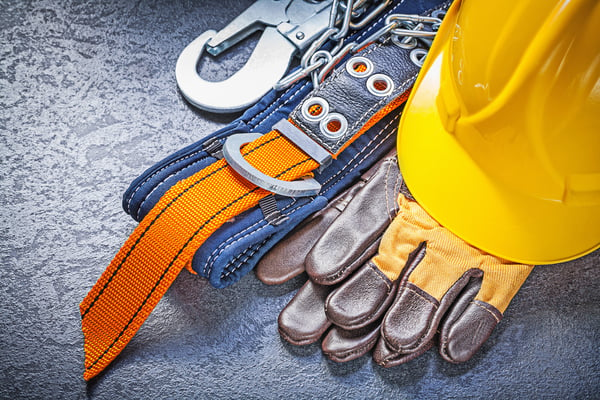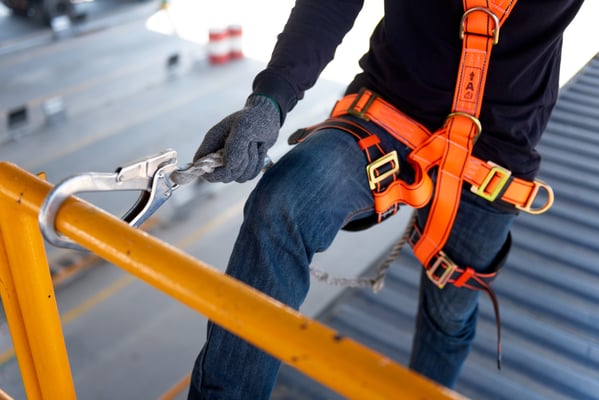Construction Safety Investment: An Ethical and Lucrative Decision

Accidents have a significant impact on construction projects, and contractors cannot afford to ignore risk factors. While minor accidents may only cause light injuries and some disruption, a severe accident can mean the end of a project or company. The human consequences of accidents cannot be quantified in monetary terms. However, many expenses can quickly add up to thousands of dollars: medical services, litigation, material and equipment damage, property damage, penalties from missed deadlines, and even lawsuits.
In many construction projects, safety procedures are viewed as an unavoidable expense or even a waste of time. When contractors have invested in safety equipment, and an activity is completed without incidents, reaching this wrong conclusion is possible. However, the cost of doing nothing is much higher than the cost of prevention, and this has been proven by several studies and industry organizations.
Improve safety in your project sites with professional construction management services.
Accidents are normally associated with costs like workers’ compensation, medical expenses, and legal services. However, construction accidents also lead to indirect costs, such as hiring replacement staff and implementing corrective measures. In high-risk industries like construction, indirect costs can be several times higher than direct costs.
Comparing Construction Safety Costs with Accident Costs

Accident prevention involves expenses like personal protective equipment (PPE), and many activities could indeed be completed faster with fewer safety protocols. However, the decision to ignore safety is neither ethical nor smart from a business standpoint. Worker lives are put at risk even when no accidents happen, and corporate image can be hurt greatly. Also, when accidents do happen, facing their consequences can be far more expensive than having prevented them.
According to OSHA, US companies pay over $1 billion per week in workers’ compensation for disabling and non-fatal injuries. Preventing these accidents protects the quality of life for workers while offering major savings for their employers. When the full impact of workplace injuries and fatalities is considered, they cost around $151 billion per year for the US economy.
The human impact of accidents is also significant, and it exceeds any financial losses: in 2018 alone, the US Bureau of Labor Statistics reported 2.8 million work injuries and illnesses, and 5,147 fatalities.

Many organizations have compared prevention costs with accident costs, and doing nothing is far more expensive in all cases. The US National Safety Council surveyed financial managers, and 60% answered that every dollar invested in prevention saves $2 in accident consequences. The European Commission reached a similar conclusion, estimating that the benefit-cost ratio of accident prevention is up to 2.18 - every euro invested in safety yields up to €2.18. Finally, a UK study found that companies save up to £3 for every £1 invested in accident prevention.
The results of multiple studies point to the same conclusion: doing nothing about construction accidents is 200% to 300% more expensive than investing in prevention measures. In the case of construction, being an outdoor industry, the weather is also a risk factor that cannot be ignored: according to the National Oceanic and Atmospheric Administration (NOAA), a $200-million project loses $250,000 in a single day of weather-related delays.
The National Safety Council estimated that each prevented injury or illness saves the employer $37,000, and each prevented fatality saves $1,390,000. Protecting workers is an ethical responsibility for companies, and they also achieve major savings by doing so. According to the International Labor Organization, the impact of work-related accidents and health issues is equivalent to 4% of the world's GDP.
Can Technology Improve Construction Safety?

Contech or construction technology is a promising field that could evolve into a multibillion-dollar industry before 2030. Contech can improve many aspects of the construction industry, and this includes accident prevention.
- For example, wearable tech can be used to track workers individually in project sites, at all times. When they step into a dangerous area, such as the swing radius of a crane in operation, they can receive an audiovisual notification immediately.
- Construction managers can also be notified automatically, and they can give the right instructions to prevent another risky situation.
Wearable tech can also be used to enforce social distancing measures during health emergencies like the current COVID-19 pandemic. For example, worn devices can detect when workers are not keeping a safe distance, and they can be notified immediately.
Technology can also be used to gather site data more effectively with digital formats, and this includes information about workplace risks. On the other hand, when inspections are conducted with printed forms, the information takes longer to reach decision-makers.
Construction accidents can be very expensive while having a human impact that cannot be calculated. However, prevention has a much lower cost than assuming the consequences, and emerging technologies can help safety managers do their jobs more efficiently.

Michael Tobias
Michael Tobias, the Founding Principal of NY Engineers, currently leads a team of 150+ MEP/FP engineers and has led over 4,000 projects in the US
Related Posts
Join 15,000+ Fellow Architects and Contractors
Get expert engineering tips straight to your inbox. Subscribe to the NY Engineers Blog below.

